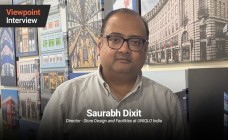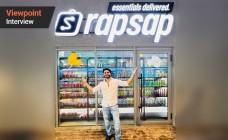Wilyer’s Co-Founder on why retail is a growth driver for its digital solutions
By Himanshi Jain | September 03, 2025
In an exclusive interaction with Retail4Growth, Dev Kartik Agarwal, Co-Founder of Wilyer, shares how retail is moving fast from posters to smart screens and digital content, powered by CMS, AI, and IoT; and how this digital shift is the company’s strongest growth driver today.

For Wilyer, retail has emerged as the strongest growth driver among the many sectors it caters to.
“Currently, we are focusing more on the retail segment, because the traction that we got from retail is more than any other sector,” says Dev Kartik Agarwal, Co-founder of Wilyer. While the company also works with many other sectors, it is retail that stands out as the most prominent category for them currently.
A club of solutions for retail
Wilyer’s solutions are built as a club of systems that brands can incorporate within their outlets. “We are providing the Content Management System (CMS) other solutions like Queue Management System (QMS), and Feedback Management System (FMS). These are a club of solutions that we provide to the end clients, which they can incorporate along with the advertisements,” Dev explains.
The evolution from posters to programmatic
Dev recalls how, not too long ago, brands relied heavily on traditional posters due to budget constraints. “Now, with better connectivity and awareness, CMS has become a game-changer,” he mentions. From campaign monitoring and real-time reporting to AI integration, brands can do so much more than just display ads.”
Wilyer’s CMS is designed as a self-serve platform. Clients receive their login credentials and manage content through their in-house graphic teams, while Wilyer provides the technology backbone. “We give them the platform, and they create and upload the visuals they want to display,” says Dev.
Addressing challenges
Among the biggest operational hurdles that retailers face while incorporating their CMS systems are inconsistent internet connectivity at screen sites, heavy content files that take longer to upload, and the difficulty of monitoring thousands of screens with limited manpower. Adding to that are third-party dependencies like ISPs or variable hardware quality, and delays that can creep in. “But once clients are trained, these hurdles reduce significantly,” Dev points out.
The shift, according to him, is not just about going digital; it’s about making hardware and software work together. He mentions that traditional methods required physical verification and logistics. However, with CMS, clients can instantly check if a campaign is live, see the status of a screen, and pull reports. “AI is playing a growing role in optimising CMS performance,” says Dev. “We’re also integrating IoT-based trigger solutions, “lift-and-learn” interactive displays, and hardware-software gamification.”
Educating clients on digital benefits
Dev also points out that sometimes, small-sector clients hesitate to have CMS because there is cost attached to it. He says, “They think they can manage manually with a pen drive. But everything is now getting automated. It is not about just the cost; it is more about the features that you would get and the fewer manual processes.”
Wilyer gives trials and demonstrations to new clients that it onboards. “In ninety per cent of the cases, we get the retention on that scale. We have also ensured that our CMS is a simple, process in which you can just get in, build your screen, put up the content, and it will get published,” Dev adds.
Beyond CMS
As Wilyer continues to scale up, retail continues to remain its strongest bet. “Last year, we only focused on CMS; now it is on that scale that we are moving on and scaling to other segments as well,” Dev emphasises.
The retail industry grows with adaptability. Constant evolution is the only way forward, as clients are always looking for new features, technologies continue to advance, and expectations never stop shifting. Those who evolve with agility and foresight will shape the future of retail.









Comments